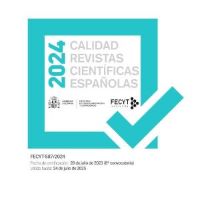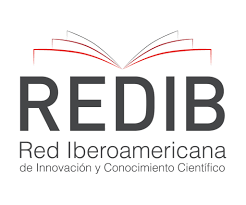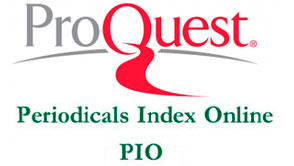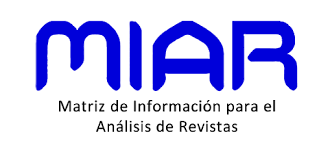Cuadernos de Investigación Histórica arises from the "Cisneros" History Seminar of the Fundación Universitaria Española. It has an annual periodicity and its objective is the research, study and dissemination of various themes of Universal History and the History of Spain. The usual language of expression is Spanish, and it is aimed mainly at researchers of spanish history.
EXTERNAL REVIEWERS PROTOCOL
INDICATIONS FOR C.I.H. EXTERNAL REVIEWERS
The Board of External Reviewers of «C.I.H.» is an essential collegiate body to be able to guarantee the excellence of this scientific publication, because the blind evaluation based exclusively on the quality of the contents of the manuscripts and carried out by experts of recognized prestige in the materia is the best guarantee and, without a doubt, the best guarantee for the advancement of science and for preserving an original and valuable scientific production in this header.
The evaluation of manuscripts by experts, therefore, is the fundamental key to select the articles with the greatest impact for the scientific community. This review also allows authors, once their manuscripts are estimated for evaluation, to have objective reports on the strengths and weaknesses of their manuscripts, by virtue of external criteria.
All reviews in "C.I.H." use the internationally standardized "double blind" peer review system that guarantees the anonymity of the manuscripts, audited within the Open Source Platform OJS 3.0, generating an average of two reports for each manuscript submitted to evaluation.
The Board of Reviewers of «C.I.H.» is made up of a group of experts on different topics, external to the governing bodies of the publication's publishing group. They may be members, in turn, of the Scientific Council or the Editorial Board, but in any case their independence and anonymity are guaranteed throughout the evaluation process.
1. Criteria for acceptance / rejection of manuscript evaluation
The editors of «C.I.H.» whenever they proceed to make an invitation to evaluate a manuscript, they send an invitation to the Reviewer who is considered the most qualified in the subject matter of the same. Although the maximum collaboration of the Reviewers is requested by the journal to facilitate and expedite the reports and responses to the authors of the manuscripts, in any case its acceptance must be linked to:
- Knowledge and academic experience on the subject of the manuscript. Acceptance necessarily implies the possession of competence in the specific subject of the article.
- Temporary availability. Reviewing an article takes time and requires careful thought on many aspects.
- Conflict of interests. The scientific community is limited. Therefore, in case of identification of the authorship of the manuscript, excessive academic or family closeness to its authors, belonging to the same University, Department, Research Group, Thematic Network, Research Projects, joint publications with the authors ... or any other type of connection or conflict / professional closeness, the editor's invitation for review should be rejected. Conflicts of interest can be both due to proximity and animosity towards the authors, if they can be identified, within the anonymity of the manuscript. Although the Authors can indicate through the Platform which researchers may have conflicts with their work, the Reviewers must also record this incident.
- Confidentiality commitment. The reception of a manuscript for its evaluation requires the Reviewer an express commitment of confidentiality, so that it cannot, during the entire process, be disclosed to a third party. For peer feedback on the article, you should consult with the editor, who must explicitly approve such restricted release for evaluative purposes. Editors welcome additional comments, but need to keep the entire review process confidential. Your assessment and recommendations will contribute to the editors' final decision.
If you cannot carry out the review for some of these or other justifiable reasons, you must notify the Editor through the OJS Platform (by the same means that you received the invitation), specifying the reasons for rejection in order to have consider.
2. The review function
The task of the External Reviewer, as peer evaluator, is to critically and constructively analyze the content of the manuscript, to collaborate with the Editors, to check / ratify if the work presented is of high scientific quality and meets all the demanding parameters of this publication to be accepted and subsequently edited.
Reviewers' rating is key to appreciating the originality and excellence of the content presented in a substantial and accurate manner.
The Reviewers will provide a general evaluation of «impact priority» that reflects the probability of the article to exert a constant and powerful influence in the research areas of the Journal.
3. General criteria for evaluating manuscripts
a) Topic
The central theme of the article, for it to be valuable and relevant, must be at a specific time (which allows it to be treated in detail, without reaching localism), while at the same time it must be of deep interest to the scientific community.
b) Drafting
In general, the critical assessment of the manuscript by the Reviewers must be written in an objective tone, providing exact citations of the manuscript or references of interest to show their argumentation and justify it.
c) Originality
The originality and suitability of the manuscript is essential as a selection criterion for our journal. The high number of papers received requires us that Reviewers be very selective:
- Is the article novel and interesting enough to justify its publication?
- Does it contribute something to the canon of knowledge?
- Is the research question relevant?
A quick literature search using tools such as Web of Knowledge, Scopus, and Google Scholar to see if the research has been previously covered can be helpful. References to these works are also of interest to the Editors.
d) Structure
Any manuscript must contain all the key elements: abstract, introduction, methodology, results, discussion and conclusion.
- The title, abstract, and keywords must accurately describe the content of the article. They are essential for Internet search engines to help any reader to easily retrieve the article.
- The literary review should summarize the state of the art of the pertinent investigations that contextualize the work in the international panorama, and explain what conclusions of other authors, if any, are being questioned or extended. It should include the general explanation of the study, its central objective and the methodological design followed.
- In the case of research, in the description and analysis of the method, the author must specify how the data are collected, the process and the instruments used to answer the hypotheses, that is, all the information necessary to replicate the study if some other researcher want to do it.
- In the results, the findings must be clearly specified, clearly established and in a logical sequence. It will be necessary to take into account whether the corresponding type of analysis followed, whether quantitative, qualitative or mixed, presents some type of error.
- The discussion includes the interpretation of the data obtained both in light of the literature review and data collection. Authors should include here if their article supports or contradicts previous theories. Finally, the conclusions will also explain the advances that the research raises in the area of scientific knowledge.
- Language: if an article presents important grammatical errors or a baroque and complicated language that makes it difficult to read and goes against the clarity, simplicity, precision and transparency of scientific language, the Reviewer should not proceed to correction, either in Spanish or English . He will inform the Editors of these grammatical errors or difficult language and they will proceed to return it to their authors so that, if necessary, they can present a text with the parameters required in accordance with regulations.
- The relevance of the figures and tables, their contribution, the precise description of the data, as well as the consistency in the graphics must also be determined.
- Finally, a thorough review of the references is required in case any relevant work has been omitted. The references must be precise, citing in the logic of the subject to study, his main works as well as the documents that most closely resemble the work itself, as well as the latest research in the area.
4. Relevant dimensions of valuation
The Ihering Reviewers have to deeply analyze the manuscript, contrasting the information offered, reviewing the scientific literature that justifies the document and informing the editors in a quantitative and qualitative way about whether or not to accept the work.
The evaluative information must be reasoned and qualitative, also accompanied by a numerical score, which must be in tune with the written observations and which also serves as a ranking criterion for the papers presented.
|
INVESTIGATIONS |
STUDIES, PROPOSALS, REPORTS,AND REVIEWS |
||
|
Elements to evaluate |
P. |
Elements to evaluate |
P. |
|
01. Title and abstract: (quality and structure) |
0/5 |
01. Title and abstract: (quality and structure) |
0/5 |
|
0/10 |
02. Relevance of the subject |
0/10 |
|
0/10 |
03. Literature review |
0/10 |
|
0/10 |
|
0/10 |
|
0/10 |
|
0/10 |
|
0/5 |
|
0/5 |
|
Score obtained |
50 |
Score obtained |
50 |
5. Ethical issues
Plagiarism: If he suspects that an article is a substantial copy of another work, the Reviewer must inform the Editors by citing the previous work in as much detail as possible. Plagiarism and self-plagiarism detection systems are used (Grammarly, Turnitin…) in a prescriptive way by the publication, both by Reviewers and Editors.
Fraud: If there is real or remote suspicion that the results in an article are false or fraudulent, it is necessary to report them to the Editors.
6. Manuscript evaluation process in OJS
From the moment the expert is part of the Review Board, he is registered in the OJS Platform and from that moment on he can receive requests for evaluation of articles. For this, he will receive an article review request email in his personal mailbox. This request must be accepted or rejected within 10 days through the platform.
To notify his decision, the Reviewer must identify himself with his username and password, provided when he was registered (in case of loss, if the user is known, a new password can be automatically requested) and have selected the role of Reviewer, you will have access to the screen with the list of "Active shipments".
When clicking on the article to be reviewed, a page will appear with information about the submission to be reviewed: title, authors and abstract, the status of the review (dates), the steps to be taken to complete the review and the rules.
- Select, according to the Reviewer's decision, whether to accept or reject the assignment.
- If the decision has been affirmative, the Reviewer must make the report.
- After sending the acceptance email, you must download the article to review and save it on your PC.
- After reviewing the downloaded article, the Evaluation Form must be filled out.
- To upload the Evaluation Form, you must press the "Browse" button that will allow you to navigate through the files on your PC until you find the one that corresponds and then press the "Upload" button.
Once the recommendation selection has been made, the screen that allows you to send an email to the editor informing him of the end of the review is enabled, for which you will have to press the button «Send Review to the editor». It is essential to do this last action so that the Editor knows that the review work has been completed.
With the sending of this email, the task of evaluating an article ends. This review will be evaluated by the Thematic Editors and Associates, who will make a decision taking into account the evaluations, and expert and editorial criteria. One of the possible decisions is to start a new round of review (second round), for which the collaboration of the same Reviewer could be requested again, who would repeat the steps described.
7. Report to Editors
The report should contain the key elements of your review addressing the points made in the previous section.
Reviewers' comments should be respectful and constructive, and should not include comments or personal data. They must provide clear and conclusive information on any deficiencies. They must explain and support their evaluation so that Editors and Authors are able to understand the reasoning behind the comments. It should also be indicated if the comments made are personal or are based on criteria of authority.
The reports can be sent to the Authors as they have been prepared by the Reviewer. It is therefore important to take special care of the formal aspects (organization, clarity, writing, spelling, etc.). Bear in mind that reports often include assessments and request modifications regarding the formal aspects of articles, so it is imperative that they be careful about what they assess.
Take care of the formulation of the evaluations, avoiding as far as possible that they can be interpreted offensively by the Authors. It is necessary to make the rigor and even the harshness of the evaluations compatible with an exquisite respect for the work of the authors. Never use expressions such as "It is not serious that ...", "Only from total ignorance or ignorance of the problem studied can it be said that ...", or similar.
The partial evaluations related to content aspects and formal aspects will take into account the following evaluation criteria:
Content aspects
- Degree of interest and topicality of the topic.
- Relevance and timeliness of the sources.
- Interest of the theoretical approach.
- Clarity in the presentation of the objectives of the work.
- Adequacy of the methodological design to the objectives of the work.
- Relevance and correctness of data analysis procedures (if applicable).
- Interest of the empirical data provided (if applicable).
- Relevance of the discussion, results and conclusions.
- Importance for professional didactics (if applicable).
Formal aspects
- Organization and structure.
- Balanced extension of sections appropriate to the content.
- Writing and style.
- Presentation of tables and / or graphs.
- Bibliographic references (APA standards and correspondence of the citations in text with the final list.
Only the criteria with respect to which the Reviewer deems it appropriate to make comments, suggestions, will be considered.
The «C.I.H.» categories to classify an evaluated manuscript are the following:
- Rejection due to deficiencies detected, justified and reasoned with a qualitative and quantitative assessment. The report should be longer if you get less than 40 out of 50 possible points.
- Acceptance without review.
- Conditional acceptance and therefore with revision (major or minor). In the latter case, it must be clearly identified which revision is necessary, listing the comments and even specifying paragraphs and pages in which modifications are suggested.
8. Manuscript evaluation protocols for External Reviewers
The External Reviewers are obliged to know in depth the regulations of the publication: https://revistas.fuesp.com/ihering/about to observe if the evaluated manuscripts are adapted to them and to indicate any important divergence.
Reviewers will follow the Manuscript Evaluation Protocol for External Reviewers Research, Studies, Reports, Proposals and Experiences):
They will examine each of the review criteria and assess the scientific and technical merit, giving each one an independent score. An article does not have to stand out in all categories to determine its level of quality and scientific impact.







2.jpg)
















1.png)
1.png)

1.png)


.png)
.png)

.png)
1.png)
1.png)
